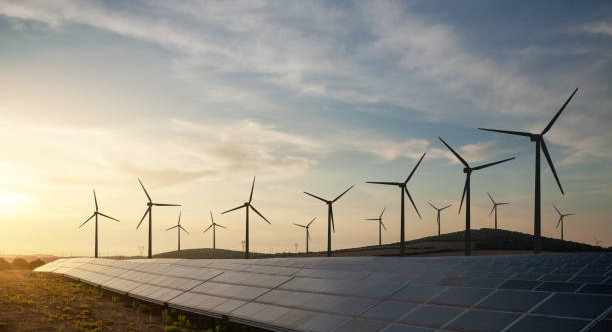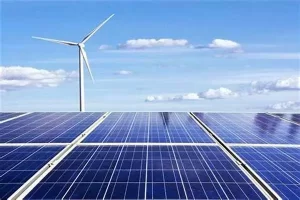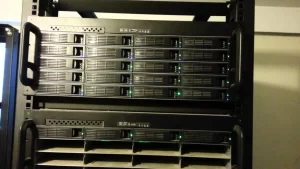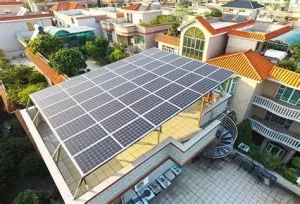Distributed Energy Management System: The Innovative Engine Driving Energy Efficiency and Sustainability
In the era of rapid evolution of the current energy landscape, the Distributed Energy Management System (abbreviated as DEMS) is gradually becoming a key technology for achieving efficient energy utilization and sustainable development. This article will deeply explore all aspects of the distributed energy manage system, including its definition, working principle, advantages, application scenarios, as well as the challenges it faces and future development trends.

1.Definition and Background of Distributed Energy Management System
The distributed energy manage system is an intelligent energy monitoring and control platform, aiming to integrate and optimize various energy resources distributed in different locations, such as solar photovoltaic panels, wind turbines, energy storage devices, micro gas turbines, and traditional grid power supply. Its purpose is to achieve efficient energy distribution, consumption management, and cost control, while improving the reliability and sustainability of energy supply.
With the global emphasis on renewable energy and the transformation of energy consumption patterns, the proportion of distributed energy resources in energy supply is constantly increasing. However, these decentralized energy resources require an effective management system to coordinate operation in order to fully exert their potential. This is the background for the emergence of the distributed energy manage system.
2.Working Principle and Core Components
The distributed energy manage system is usually composed of the following core components:
- Sensors and monitoring devices: Used for real-time collection of data on energy production, storage, and consumption, including electricity quantity, voltage, current, power factor, etc.
- Communication network: Transmits the collected data to the central control system. Common communication technologies include Wi-Fi, Bluetooth, Zigbee, and cellular networks, etc.
- Central control system: Analyzes and processes the data, uses algorithms and models to predict energy demand, optimize energy distribution strategies, and issue control instructions.
- Control devices: Such as smart switches, inverters, regulators, etc., adjust the operating status of energy equipment according to the instructions of the central control system.
Its working principle can be simply summarized as: Sensors collect data, which is transmitted to the central control system through the communication network. After analysis and processing, control instructions are generated, and then the optimization management of the energy system is achieved through control devices.

3. Advantages of Distributed Energy Management System
- Improve energy efficiency: Through precise monitoring and optimization control, reduce energy waste and improve the overall utilization efficiency of energy.For example, in a commercial building, DEMS can intelligently adjust the operation of lighting and air conditioning systems according to the usage time and demand of different areas, thereby significantly reducing energy consumption.Enhance energy reliability: When the main power grid fails or becomes unstable, distributed energy can quickly switch and ensure the power supply of critical loads, improving the stability of energy supply.
- Reduce energy costs: Optimize energy procurement and usage strategies, combine self-production and self-use of renewable energy, and reduce dependence on external energy and costs.Promote renewable energy integration: Effectively manage the intermittency and volatility of renewable energy and increase its penetration rate in the energy system.
- Achieve energy visualization: Provide users with clear and intuitive energy consumption and production data to help users better understand and manage their energy usage behavior.
4.Application Scenarios
- Industrial field: Factories can achieve energy management of production line equipment through DEMS, optimize energy consumption in the production process, and reduce production costs.
- Commercial buildings: Such as office buildings, shopping malls, hotels, etc., realize intelligent energy control of equipment such as air conditioning, lighting, elevators, etc., improving energy efficiency and comfort.
Residential communities: Manage the energy consumption of public facilities in the community and the distributed energy devices of residents, such as rooftop solar panels.
Microgrid: In an independently operating microgrid, DEMS is the key to ensuring the stable operation of the grid and the optimal distribution of energy.
5.Challenges and Response Strategies
- Data security and privacy issues: Due to the involvement of a large amount of energy data transmission and storage, it is necessary to strengthen data encryption and access control to prevent data leakage.
- System integration complexity: There may be compatibility and interface issues when integrating with various types of energy equipment and systems. It is necessary to establish unified standards and protocols.
- High initial investment cost: Including hardware equipment procurement, software system development, installation and commissioning, etc. The cost needs to be gradually recovered through long-term energy savings and efficiency improvement.
- Uncertainty of regulations and policies: Regulations and policies in the field of energy management are constantly changing, which may affect the promotion and application of DEMS. It is necessary to pay close attention and actively adapt to the policy environment.
6.Future Development Trends
- Application of artificial intelligence and machine learning: Further improve the accuracy and real-time performance of energy prediction and optimization.
- Deep integration with the Internet of Things: Achieve wider device connection and data collection to create a more intelligent energy ecosystem.
- Introduction of blockchain technology: Used to ensure the security and transparency of energy transactions and promote the market-oriented trading of distributed energy.
- Cross-regional energy management: With the wide application of distributed energy, DEMS will gradually achieve cross-regional energy coordination and management, improving the efficiency and stability of the entire energy system.
In conclusion, as an innovative solution in the energy field, the distributed energy management system has huge potential and development prospects. Despite facing some challenges, with the continuous progress of technology and policy support, it will play an increasingly important role in promoting energy transformation and achieving sustainable development goals.
Hope this blog can give you a deeper understanding and awareness of the distributed energy management system, and jointly look forward to a more efficient, clean and sustainable energy future!
Contact us
- Email:[email protected]
- Tel: +86 13651638099
- Address: 333 Fengcun Road, Fengxian District, Shanghai
Get A Quote Now!
Read more

Unveiling Photovoltaic+Energy Storage: Four Major Application Scenarios Leading the Future of Energy
In this way, the energy landscape is evolving, and one of the most thrilling developments in renewables is the integration of photovoltaics energy storage.

From Theory to Practice: Four Methods for Estimating Photovoltaic Power Generation
Photovoltaic power generation has become an essential part of modern energy solutions, particularly in home solar systems and distributed power applications

Rack-Mounted Lithium Iron Batteries: Creating Efficient and Reliable Energy Storage Solutions
When it comes to modern energy solutions, rack-mounted lithium iron batteries are taking center stage in a variety of industries. Whether you’re powering data centers, stabilizing energy for households, or keeping critical systems online at 5G base stations, these batteries have become the unsung heroes of our electrified world.

Late Night Energy Saving Tips: How to Maximize Electricity Savings During Off-Peak Hours
With rising energy costs, homeowners are increasingly exploring innovative ways to save on their electricity bills. One effective approach is utilizing off-peak hours—times when electricity rates are significantly lower due to reduced demand.
